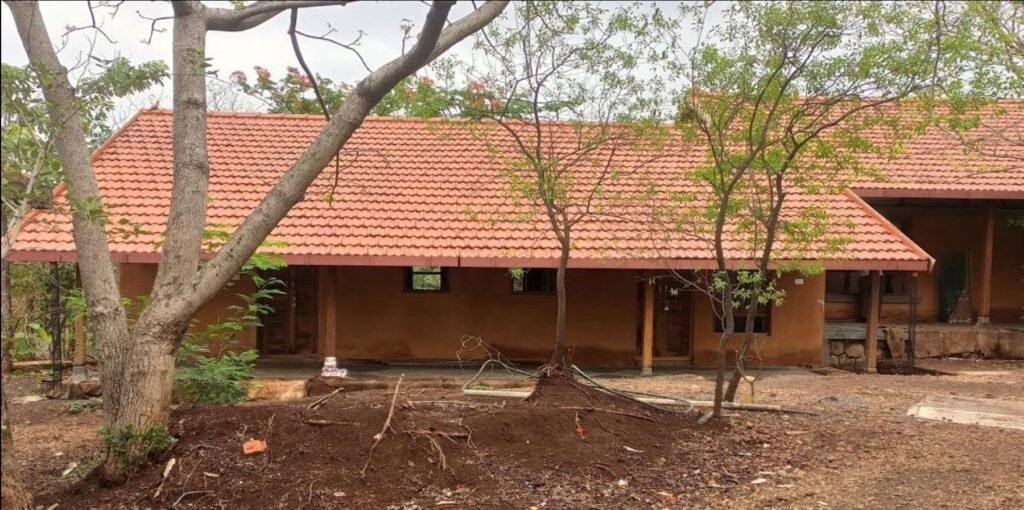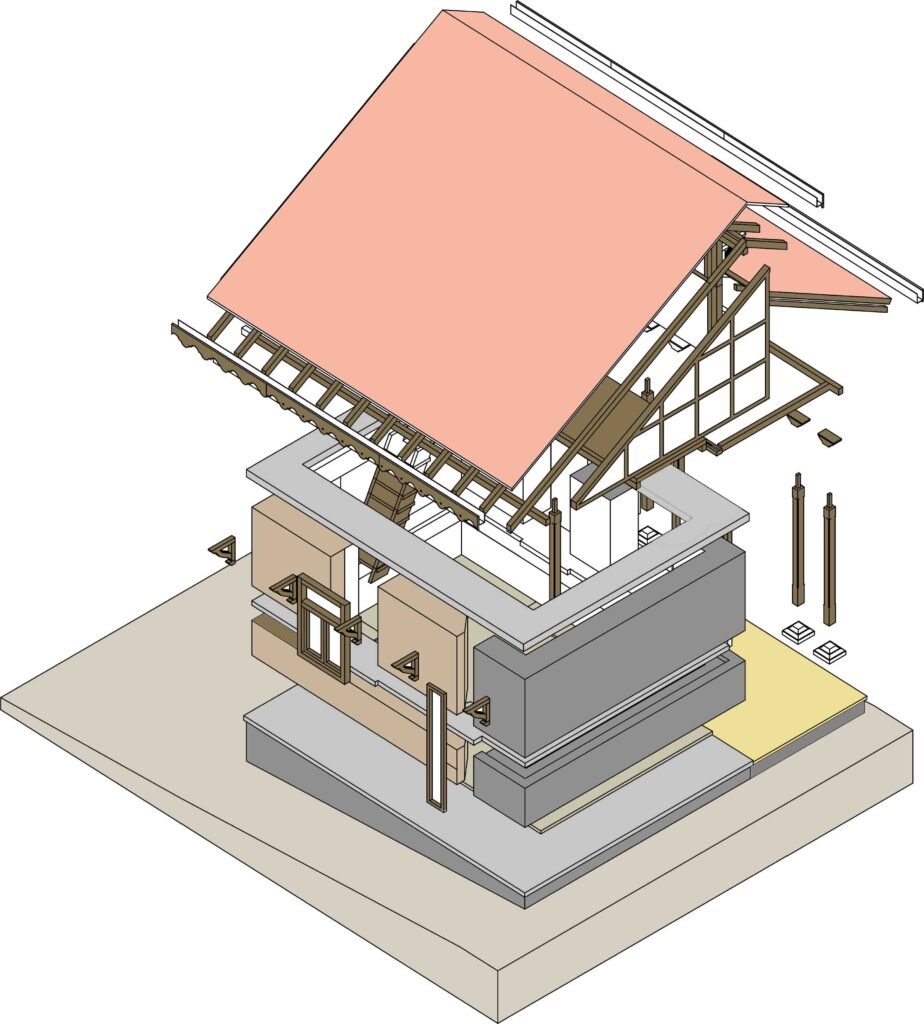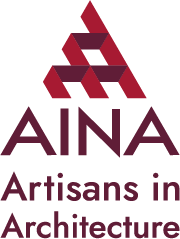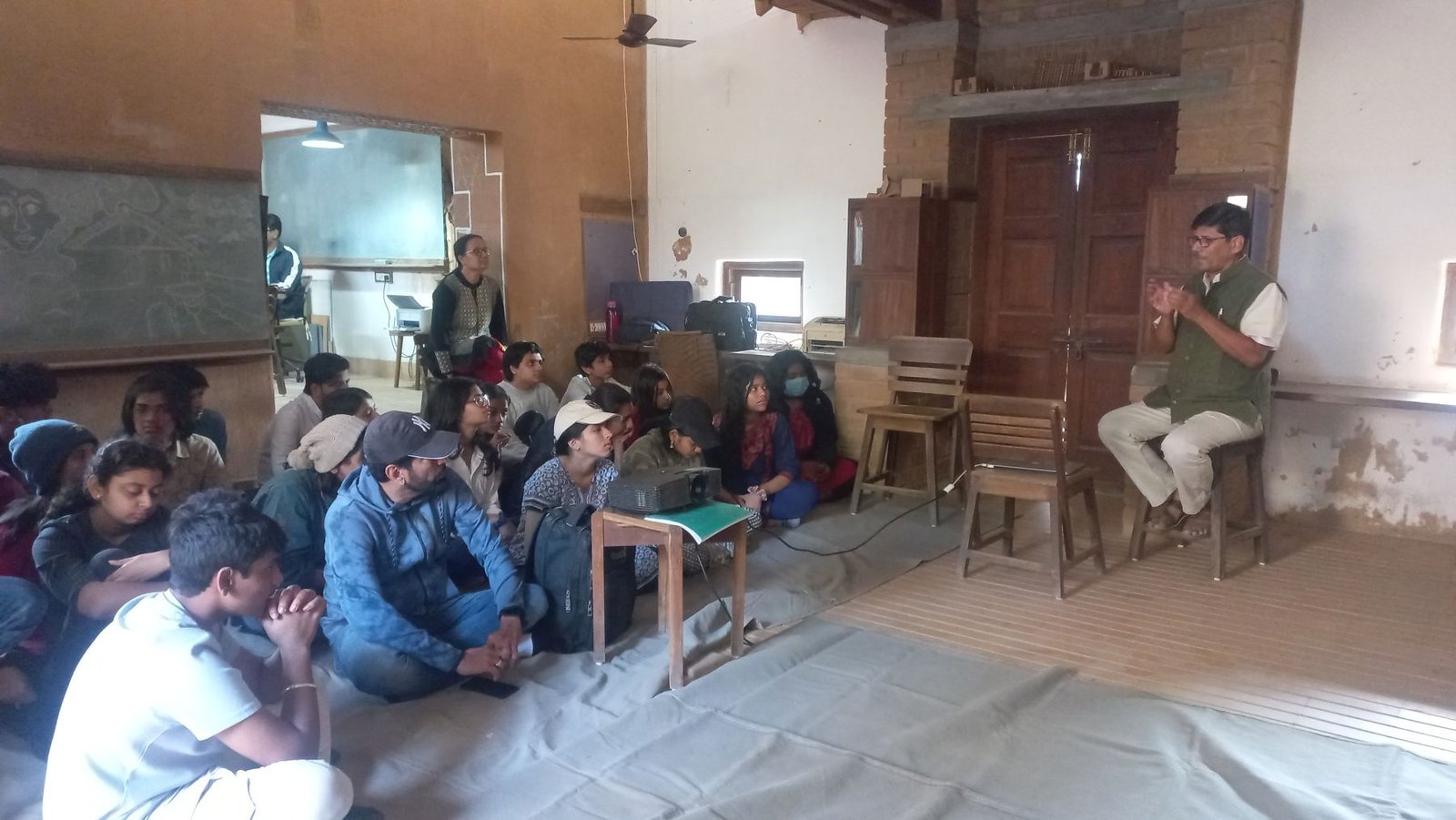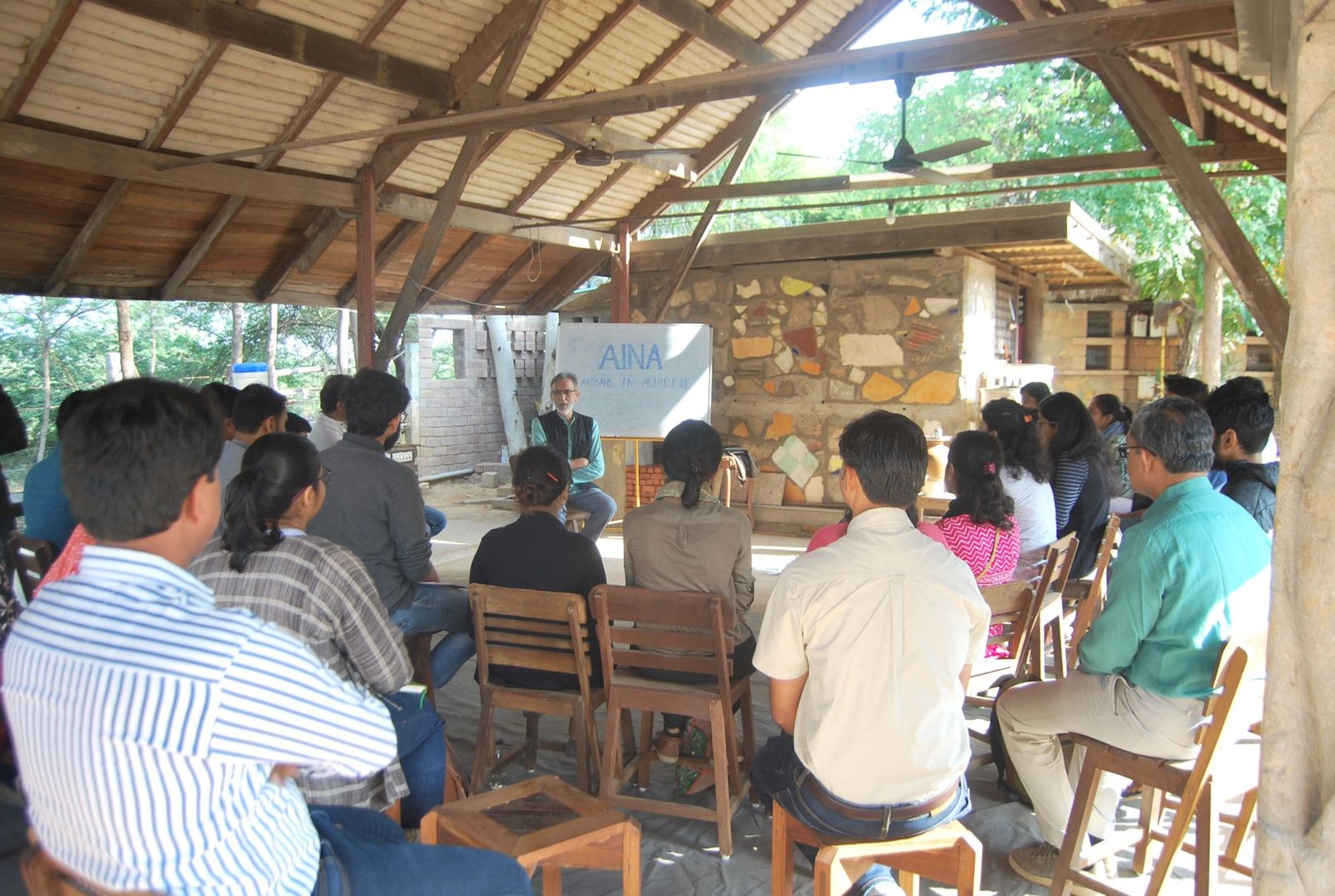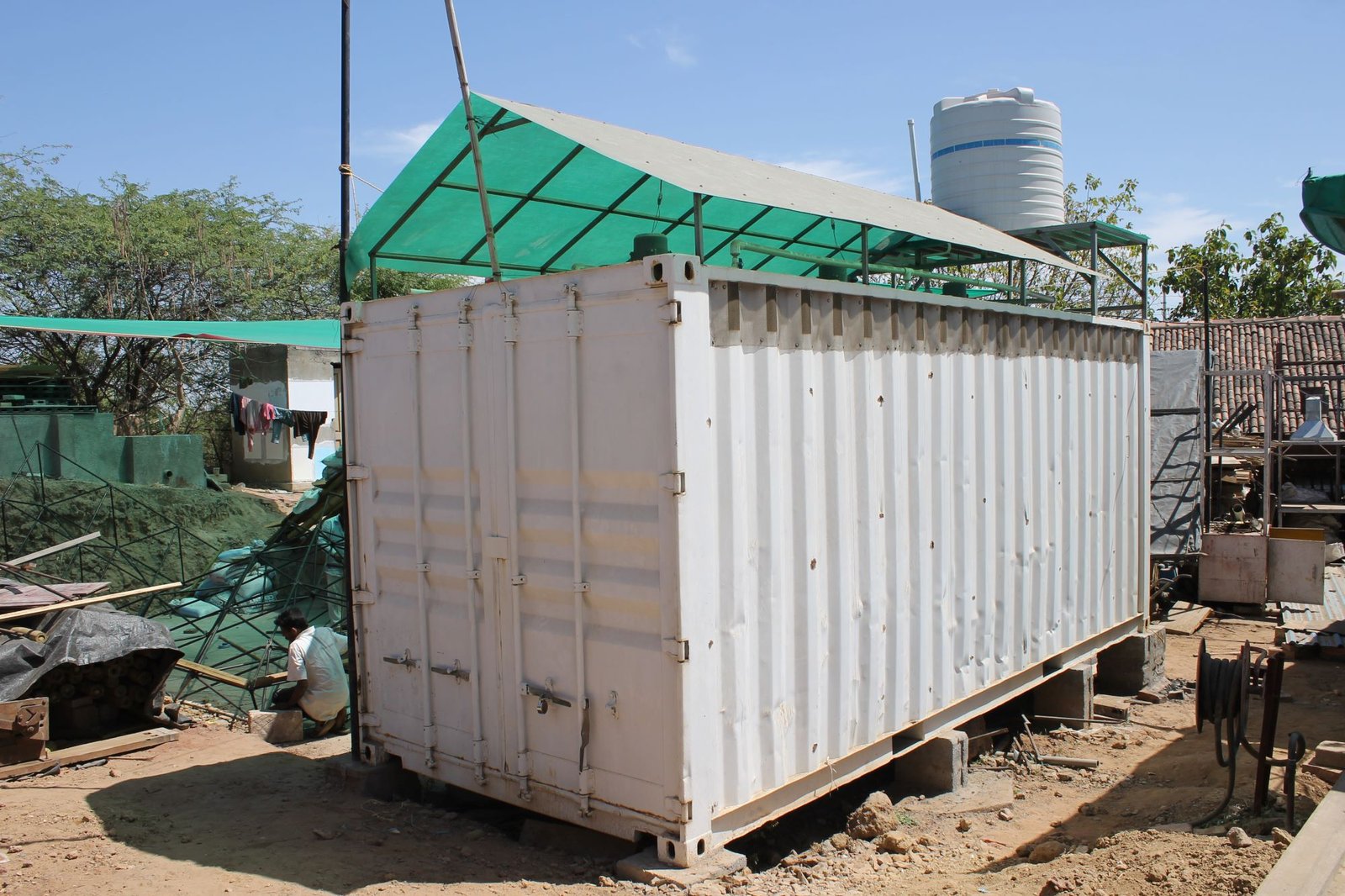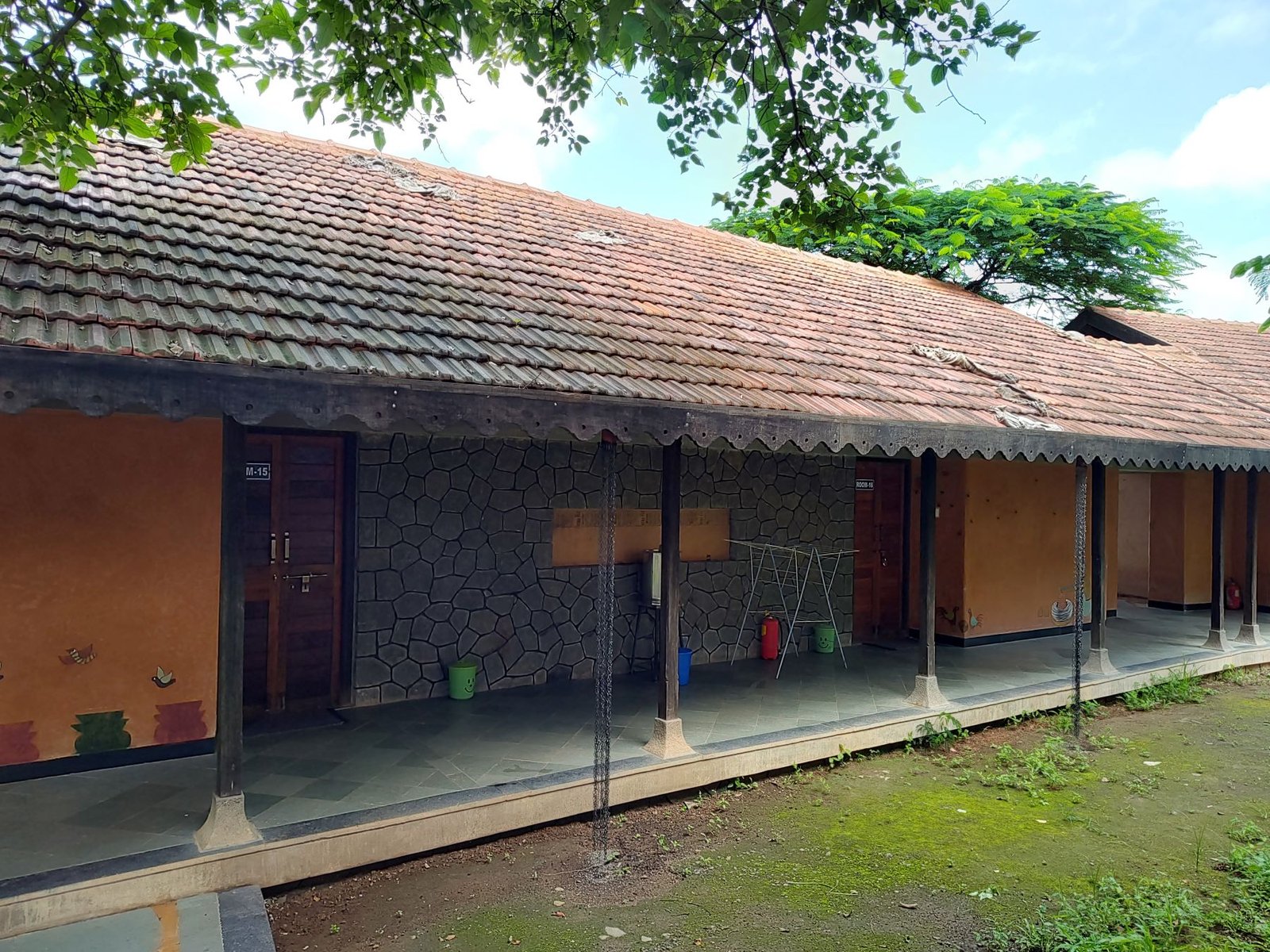
Sahyadri School, situated in the Khed taluka of Maharashtra, is a residential school run under the Krishnamurti Foundation of India (KFI). Nestled on a scenic hilltop about two hours away from Pune city, the school was established in 1994 and spans across 70 acres of land. Guided by the principles set forth by Jiddu Krishnamurti, the school aims to foster a pedagogy of learning that engages with the people and environment of the region, emphasising a deep connection with nature.
In line with the school’s vision, the design brief for Sahyadri School focused on creating buildings that would embody the environmental craft and building traditions of the region, while adhering to low carbon footprint principles. The goal was to incorporate ecologically sensitive construction technologies and practices from across the country. Simplicity and frugality, which are integral to the school’s ethos, were to define the aesthetics of the buildings.


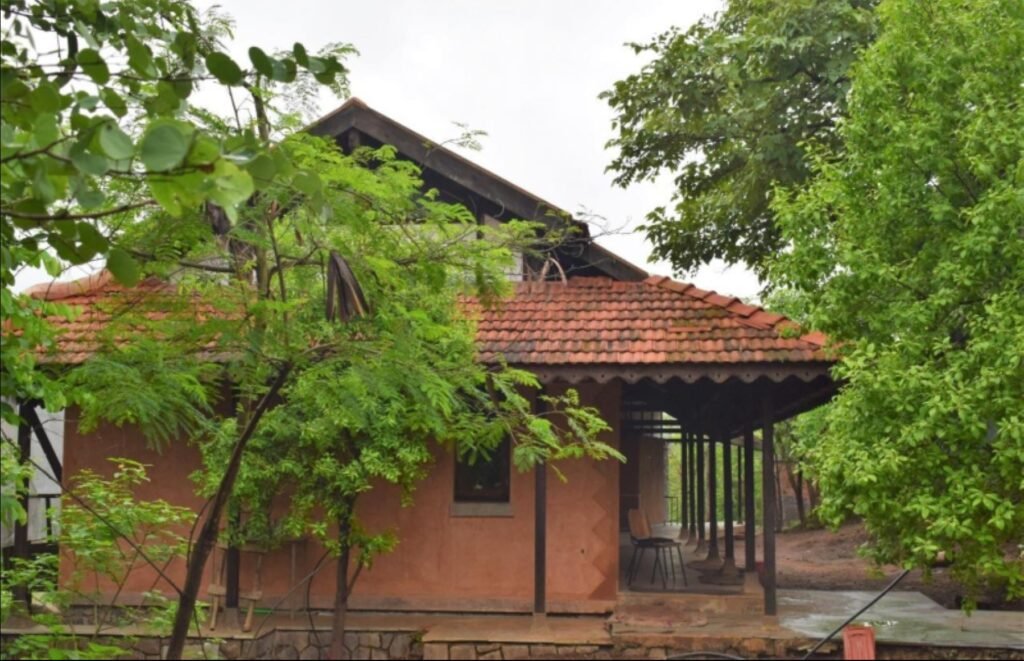

The master plan for the 70-acre campus was to be revised to align with the natural principles dictated by the ecology and hydrology of the hill. The school aspired to become self-sufficient in terms of water and energy and also aimed to maximise food production on campus. To ensure the sustainability of these practices, the school intended to share the process and learnings with the students and teachers, integrating them into the teaching methodology.
To materialise these objectives, the design team meticulously researched and identified appropriate materials and technologies. While the majority of construction in the region relied on cement and brick, the team discovered two prevailing building traditions. The tribal communities employed a simple technique involving random rubble stone in mud mortar, with tiled roofs supported by wooden structures. On the other hand, the non-tribal, predominantly Maratha community constructed elaborate double-storey structures using sun-dried mud blocks plastered with lime and/or coursed stone masonry. These homes featured exquisite stone and wood carvings, with mud plasters and floors.
With the aid of local artisans and their own master artisans and engineers, the design team developed a vocabulary centered around earth, stone, wood, lime, and bamboo. Earth-based techniques included the use of sun-dried bricks, which were made from clayey silt collected from drying ponds and lakes during the early summer. Rammed earth walls, although not traditional to the region, were constructed using ideal red earth found approximately 20 kilometers away from the school. Wattle and daub panels were incorporated into gables, employing available clay-silt soils, mud plastering on the inside, and lime plastering on the exterior for protection against rain.
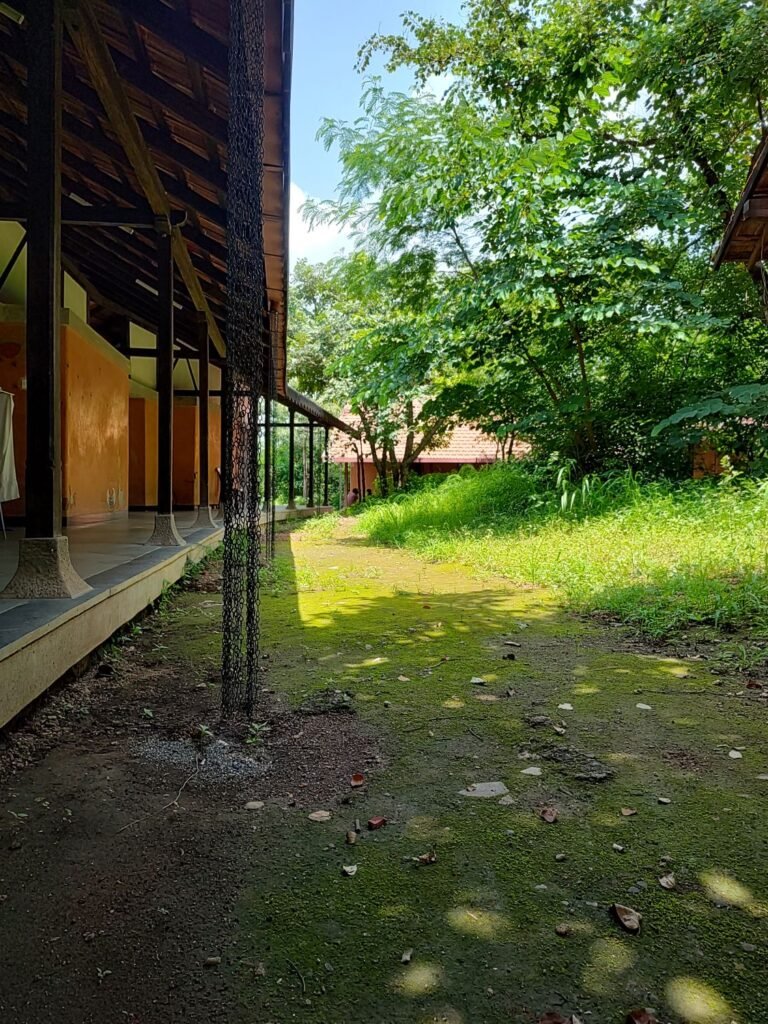

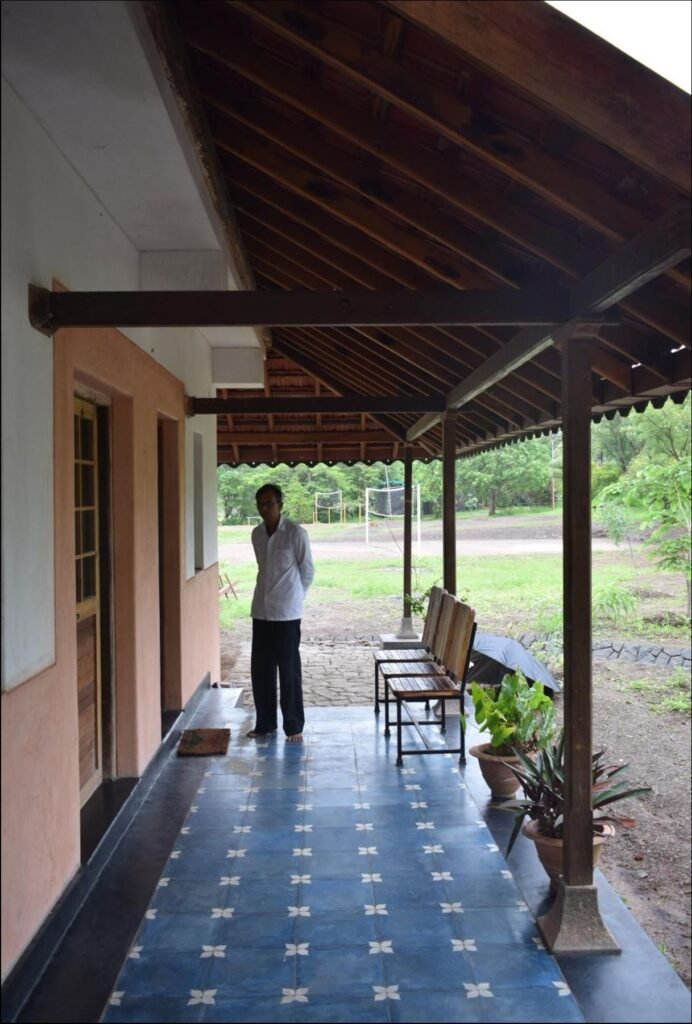
Additionally, exposed flat roof areas were to be replaced with shallow domes made of stabilized earth blocks. Locally sourced gravelly soil, known as murram, was to be rammed for earth floors, which could be finished with a coat of cow dung or oil. Mud plaster would be applied to sundried bricks for wall plasters.
The stone materials primarily consisted of basalt found in the Sahyadri. Harder, brittle stone was selected for masonry, while softer stone was reserved for sculptures, door frames, and other carved elements. The team enlisted the expertise of artisans from the Bhimashankar area for the stone masonry work.
In terms of wood, the school was conscientious of the ecosystem and aimed to minimise the cutting of trees for timber. Instead, selective use of teak trees planted by the forest department was considered. Additionally, the school opted to procure timber from old homes being auctioned, as well as from ship-breaking yards in Alang, Gujarat, promoting the concept of recycling.
Lime, essential for plastering exposed mud walls to protect against rain, was sourced from Rajasthan. Bamboo, although not a local material.
